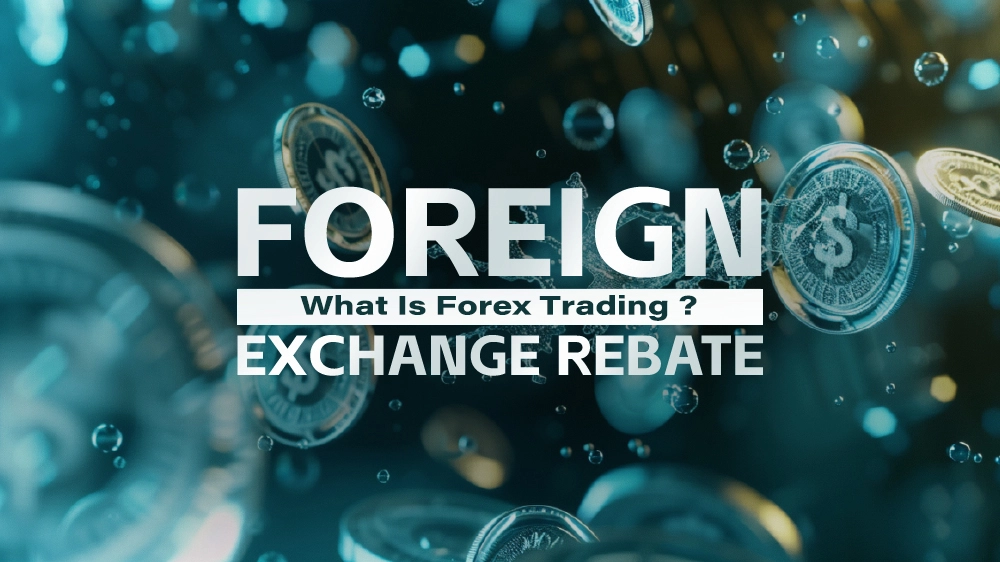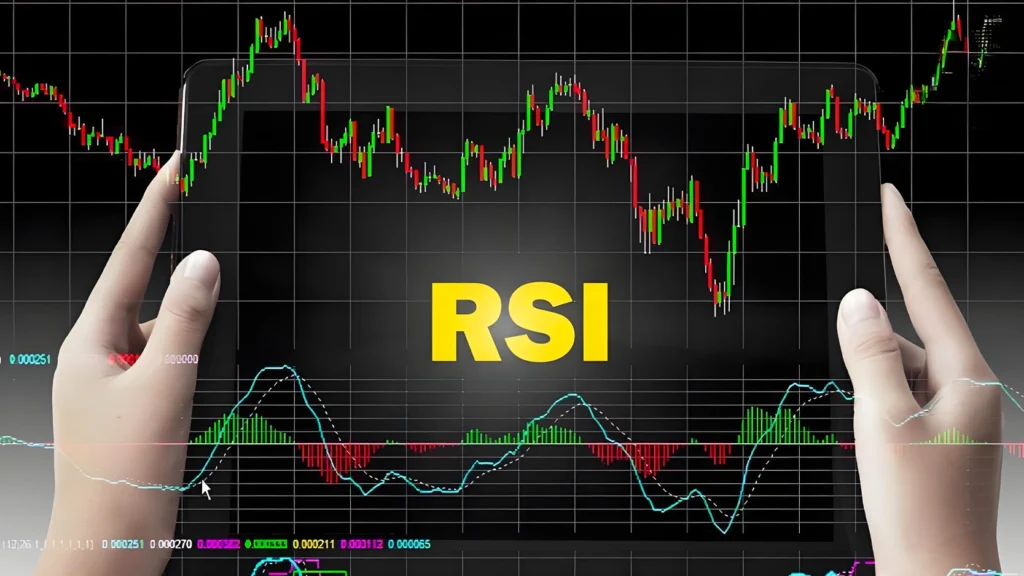What Is a Forex Rebate?
Forex rebate, also known as forex cashback, refers to the portion of trading fees (mainly in the form of spreads or commissions) charged by brokers during forex trading that is returned to clients by agents (or Introducing Brokers, IB). This effectively reduces clients’ trading costs. It is widely understood as a reward for trading activity or a partial refund of trading fees. In the forex market, every trade inevitably incurs costs, primarily reflected in spreads or commissions. The core value of the rebate mechanism lies in providing a way for traders to recover part of these inherent trading costs, thereby improving trading efficiency and potential returns.
This is similar to a credit card cashback program. Just as credit card providers share part of the merchant fees with consumers as cashback, forex rebate providers share a portion of the commissions earned from forex brokers with clients. These funds come from the commissions that the provider receives from the forex broker for referring trades.
For example, as a professional financial rebate platform, Cashback Island not only provides rebates paid by brokers but also offers additional exclusive rebates on top of that, ensuring traders receive the highest rebate rates in the industry. All trades executed through trading accounts opened via Cashback Island, regardless of profit or loss, are eligible for rebates provided by Cashback Island. For traders, this is potentially advantageous as it directly impacts the net cost of each trade, making trading activities more cost-effective.
At the same time, this also implies that when evaluating brokers, traders should not only consider the apparent spreads but also the potential rebate benefits.
What Is the Operational Mechanism of Forex Rebates?
The Core Operational Mechanism of Forex Rebates Expands Around the “Introducing Broker (IB)” Model. IB plays a key intermediary role in the market, responsible for connecting potential traders with reliable forex brokers. The primary responsibilities of IBs are not limited to introductions; they also guide new traders in choosing suitable platforms and assist them in setting up trading accounts and entering the forex market. When traders open accounts and trade through IB recommendations, brokers pay commissions to the IB based on these clients’ trading volume. The IB then returns most of this commission to the traders, which is known as “rebates”. This model benefits all parties involved: IBs earn stable commission income by introducing clients, brokers attract more active clients and expand their market share through IBs, and traders effectively reduce their trading costs and enhance economic efficiency through rebates.
Cashback Island, developed by ISLAND MEDIA LTD., operates through this IB model as a professional financial rebate platform. It partners with multiple popular forex brokers, allowing clients to freely choose brokers for trading. The forex rebate program operates mainly in three steps:
- Linking Accounts: Link a new or existing forex trading account to Cashback Island’s rebate program.
- Broker Pays the Provider: The forex broker pays a portion of the spread or commission profit from each trade to Cashback Island.
- Provider Pays the Trader: Cashback Island refunds these earnings to your account in cash based on your trading volume, accumulating regardless of whether the trade results in profit or loss.
Cashback Island offers multiple payment options. Traders can set a custom minimum payout amount to accumulate rebates and reduce monthly withdrawal frequency, thereby lowering handling fees. Some payment methods may incur fees, which Cashback Island will clearly disclose before processing, ensuring transparency.
In the IB model, brokers pay commissions to IBs in exchange for client traffic, and IBs then return part of these commissions to clients. This is similar to the concept of Payment for Order Flow (PFOF) in the securities market, where brokers route client orders to specific market makers in return for compensation. Both involve “traffic providers” receiving rewards from “executors”, and potentially passing some benefits back to end clients. This business model is widely used in financial markets, and its legitimacy is built on transparency and disclosure. Regulators require brokers to disclose PFOF, and likewise, rebate providers should clearly explain the rebate mechanism and fund flows.
Although rebates are a portion of the commission paid by brokers to IBs, many rebate providers operate as independent third-party platforms. Therefore, when selecting a rebate service, traders should assess not only the broker’s reliability but also the rebate provider’s operational model, payment policy, and user feedback to avoid potential risks such as withdrawal delays, hidden fees, or provider insolvency. A well-designed rebate strategy requires due diligence on both entities.
What types of forex rebates are there?
Forex rebates are mainly divided into several types to accommodate different trading needs and strategies.
Fixed Rebates vs. Variable/Volume-based Rebates:
- Fixed Rebate: In this type, the broker returns a predetermined fixed amount to the trader’s account for each lot traded. This amount is the same for all eligible trades and is not affected by the trading volume.
- Variable/Volume-based Rebate: The rebate amount is determined based on the trader’s total trading volume over a specific period (e.g., monthly). Typically, the greater the volume, the higher the rebate ratio or amount the trader receives. This model usually sets a fixed rate per lot and is particularly beneficial for high-frequency traders, as they can accumulate rebates quickly by increasing trading frequency.
Spread Rebates vs. Commission Rebates:
- Spread Rebates: This type of rebate returns a portion of the spread paid on each trade to the trader. It is generally more suitable for traders focusing on currency pairs with lower spreads (i.e., higher liquidity), as even small spread rebates can accumulate into significant returns over numerous trades.
- Commission Rebates: This type of rebate returns a portion of the commission paid on each trade to the trader.
- Cashback Rebates: This type of rebate directly credits the rebate amount to the trader’s account balance, usually automatically after each trade is completed, providing real-time monetary returns.
Different types of rebate structures are designed to cater to various groups of traders and trading strategies. Fixed rebates provide predictability for traders with unstable trading volumes, while variable/volume-based rebates clearly favor high-frequency traders and scalpers, as their trading volume can maximize rebate returns. Spread rebates precisely serve those strategies aiming for ultra-low trading costs. This means that when selecting a rebate service, traders should not simply pursue the “highest” rebate rate, but should instead choose the most suitable rebate type based on their own trading frequency, average volume, preferred currency pairs, and trading style. A mismatched rebate type may result in actual returns falling short of expectations, or even cause a shift from the original profitable strategy due to the pursuit of an unsuitable rebate.
What are the main advantages of forex rebates?
Forex rebates provide traders with multiple tangible benefits, primarily reflected in cost reduction and improved profitability.
Significantly lower trading costs: Forex rebates directly reduce the costs traders pay on each trade, including spreads and commissions. For active traders, especially those engaged in high-frequency or large-volume trading, the cumulative effect of these costs is substantial. Rebates can effectively offset part of the trading expenses, thereby saving traders a considerable amount of money. For example, if a broker offers a rebate of $3 per lot, and a trader accumulates 5 lots in EUR/USD trades, they will receive a $15 rebate. Although this amount may seem small per trade, the long-term savings under frequent trading can be significant.
Enhance overall profitability: Reducing trading costs directly translates into an increase in net profit margins. Even seemingly negligible rebates, when accumulated over time, can significantly improve a trader’s return on investment (ROI). For scalpers or high-frequency traders operating on tight profit margins, rebates may even be a crucial component of their overall profitability.
Rebates are awarded regardless of profit or loss: Forex rebates are paid based on trading volume rather than trading outcomes. This means that whether a trade results in profit or loss, as long as the volume is completed, the trader will receive the corresponding rebate. This provides traders with a relatively stable additional income stream—even during unfavorable market conditions or losing trades, rebates can partially offset the losses and help reduce overall trading pressure.
As a form of “reward” mechanism, rebates received even on losing trades may offer traders a psychological sense of “security” or “compensation”. This psychological effect may, in some cases, lead traders to take on more risk or tolerate suboptimal trading opportunities, knowing that they can recover a portion of the cost even if the trade ends in a loss. However, although rebates objectively reduce costs, traders must maintain strict trading discipline and avoid being lured into overtrading or deviating from their established and validated strategies due to the temptation of rebates. Rebates alone are not sufficient to offset significant losses caused by poor trading decisions. This reminds us that any incentive mechanism may lead to behavioral biases and must be approached rationally.
What are the potential risks and limitations of forex rebates?
Although forex rebates are attractive, traders must fully understand the associated potential risks and limitations.
Fraud and false advertising: The forex market, due to its high-profit potential, attracts a large number of malicious actors who often use “high rebates” or “large bonuses” as bait for fraudulent schemes. Traders must be highly vigilant when faced with excessively high rebate rates that claim to double or multiply funds within a short period—this is a common tactic used in forex scams. Scam platforms may appear legitimate and professional on the surface, but their core intent is to steal traders’ funds and sensitive personal information. Research clearly shows that “high rebates or large bonuses” are frequently used tactics in forex fraud. When choosing a rebate service, traders should treat “excessive” rebate rates as a significant red flag and focus instead on the broker’s regulatory status, reputation, and track record, rather than simply pursuing high returns. This underscores that in financial markets, risk awareness and thorough due diligence are fundamental to protecting one’s assets.
Broker credibility and withdrawal issues: Choosing an unreliable or unregulated broker can lead to serious consequences, including trade execution delays, hidden fees, poor customer service, and even an inability to withdraw funds. Withdrawal issues are one of the most common complaints in forex trading and may manifest as processing delays (due to verification issues or system outages), limited withdrawal methods, regional or payment method restrictions, and hidden fees or exchange rate differences during currency conversion. Some rebate service providers may also experience delays in rebate reporting or data omissions, indicating a lack of operational transparency. Traders should carefully verify all payment details when making withdrawals, ensure sufficient account funds, and follow the broker’s withdrawal priority rules to minimize issues.
Hidden fees and terms: In addition to explicit spreads and commissions, brokers and rebate service providers may impose other hidden fees that can significantly offset the cost savings brought by rebates. Common hidden fees include withdrawal fees (such as wire transfer charges), account inactivity fees (for prolonged periods of no trading), and overnight financing charges (for holding positions overnight). Some rebate programs may have minimum trading volume requirements, and rebates will not be granted if these thresholds are not met. Furthermore, rebates are typically not combinable with other offers or promotional activities provided by the broker, meaning that traders may need to choose between different incentives.
Incentive for overtrading: The rebate mechanism, especially volume-based rebates, may unintentionally encourage traders to increase their trading frequency and volume, in pursuit of higher rebate returns. This behavior can lead to “overtrading,” where traders blindly open and close positions without sufficient market opportunities, thereby increasing trading risk, and potentially prompting suboptimal trades-even in violation of their established and validated trading strategies. It is worth noting that, in certain jurisdictions such as the UK and the EU, forex rebates are prohibited due to concerns that they may incentivize overtrading. This reflects regulatory authorities’ caution regarding this potential risk.
Regulatory restrictions in certain regions: Regulations on forex trading and rebates vary across countries. As mentioned earlier, certain regions (particularly the UK and the EU) have explicitly prohibited forex rebates, which means that traders in these areas cannot legally participate in rebate programs.
Although rebates promise to reduce trading costs, withdrawal restrictions, hidden fees (such as wire transfer charges and currency conversion fees), and fixed monthly payment cycles can significantly affect the efficiency and convenience of actually receiving the rebates. For example, Paybackfx clearly states that payments are only made once per month, between the 1st and 10th. This means that even if rebates accumulate, the funds may not be available for immediate use. This reminds traders that when evaluating rebate services, they should not only focus on the rebate rate, but also carefully review the rebate provider’s withdrawal policies and fee structure. Ensuring that rebates can be withdrawn in a timely and convenient manner is crucial to avoid having funds locked for extended periods or significantly reduced due to high withdrawal fees, which is essential for traders’ fund management and liquidity.
Who regulates the legality of forex rebates?
governments and independent regulatory bodies across various countries and regions. Major authoritative regulatory bodies include: the National Futures Association (NFA) and the Commodity Futures Trading Commission (CFTC) in the US, the Financial Conduct Authority (FCA) in the UK, the Australian Securities and Investments Commission (ASIC), the Financial Services Agency (FSA) in Japan, the Investment Industry Regulatory Organization of Canada (IIROC), and the Swiss Financial Market Supervisory Authority (FINMA). The core responsibilities of these regulators are to establish and enforce industry standards, require brokers to register and obtain operating licenses, undergo regular audits, and disclose service changes transparently to clients. These measures are intended to ensure fairness, transparency, and ethical conduct in the forex trading market, protecting investors from fraud and misconduct.
Any company intending to provide forex brokerage services must obtain the appropriate financial services license. This license serves as the official authorization for its legal operation and the provision of financial services. Regulatory authorities have an ongoing responsibility to supervise licensed brokers. If a broker is found to be in violation, the regulator has the authority to take strict measures, including issuing warnings, imposing fines, or even revoking the operating license. Although introducing brokers (IB) typically do not need to hold a full financial services license like brokers do, they must cooperate with regulated brokers and comply with relevant client referral and compliance requirements.
Top-tier regulatory bodies such as the FCA and ASIC have significantly reduced leverage ratios in recent years and restricted services to overseas investors. This has directly led many well-known brokers to establish “offshore-regulated” subsidiaries or sub-brands in order to continue offering high-leverage services and serve global clients. This indicates that although forex rebates themselves are legal in many regions, their operating environment is notably affected by the tightening of global regulatory policies. Traders need to understand that even reputable brokers may provide rebate services through their offshore entities, which could mean relatively looser regulatory protection compared to top-tier regulators. Therefore, when making a choice, traders should weigh the potential benefits of high leverage against the additional risks associated with offshore regulation.
Research clearly indicates that there are significant differences in the “credibility” and protection scope of regulatory licenses across different countries. For example, the US MSB and Canada’s FINTRAC MSB licenses differ in terms of coverage and strictness. Some fraudulent platforms may exploit this by choosing licenses that are easier to obtain as a “shortcut”, thereby creating a false impression of legitimacy and compliance. In addition, merely claiming to hold a license is not sufficient, traders must learn to verify such claims through the official websites of the regulatory authorities. This highlights the complexity and necessity of verifying a broker’s regulatory information. Simply seeing the label “regulated” is not nearly enough, traders must thoroughly verify the type of license, the issuing authority, the scope of protection, and whether the license is genuinely held by the actual legal entity conducting the trades. This places higher demands on traders’ due diligence to avoid falling for “bait-and-switch” scams and to protect their own rights.
How to identify a regulated rebate service provider?
Identifying a regulated rebate service provider is a crucial step in protecting traders’ fund security.
Check regulatory licenses and transparency: Always prioritize forex brokers that are strictly regulated by authoritative financial institutions. This means the broker must comply with high standards set by the regulator, ensuring the legitimacy and fairness of its business operations. Be sure to carefully verify the broker’s regulatory information, including the name of the financial authority it claims to be regulated by, the specific license number it holds, the official website of the regulatory body, and the exact method for searching and verifying the license. For traders based in the US, it is essential to use the National Futures Association (NFA)’s BASIC database to examine the broker’s registration status, past disciplinary or regulatory history, and financial information in detail. While rebate service providers (IBs) may not directly hold financial service licenses like brokers do, the brokers they cooperate with must be strictly regulated entities. In addition, the operational transparency of the rebate service provider, such as the ability to provide real-time rebate reports, is also an important indicator of its credibility and reliability.
Fund Security Guarantee: Regulated brokers are typically required to strictly separate client funds from the company’s own operating funds and to deposit client funds in independent “custodian banks”. This measure ensures the independence of client funds, meaning they will not be misappropriated even if the broker encounters operational difficulties or bankruptcy. Some stricter regulatory bodies may also require brokers to purchase insurance for investors’ funds, providing an additional layer of protection. For example, brokers under the supervision of Switzerland’s FINMA may offer insurance coverage of up to 100,000 CHF. These fund security measures are designed to protect investors’ funds to the greatest extent possible and to prevent losses caused by a broker’s poor management or insolvency. The role of regulatory authorities goes beyond license approval, they are also responsible for ongoing supervision of licensed brokers and for enforcing substantive fund security measures such as fund segregation and insurance coverage. This demonstrates that the value of a regulatory license lies not only in its “legitimacy” or “authorization”, but more importantly in the actual protection it provides for investor funds. Traders should view regulation as the primary safeguard for fund security, rather than merely a symbol of compliance. When selecting brokers and rebate service providers, priority should be given to entities with clear and strict regulatory requirements for fund security, and these protective measures should be thoroughly verified.
How to choose the right forex rebate service?
Choosing the right forex rebate service requires a comprehensive evaluation of multiple factors to ensure it truly brings value to the trader.
Evaluating rebate rates and payment transparency
Comparison of rebate rates: Carefully compare the rebate rates offered by different brokers and rebate service providers. Rebate rates are typically expressed in dollars or pips per lot, such as “$3 per lot” or “0.35 pips per lot”.
Payment transparency: Choose providers that offer a clear rebate calculation method, real-time reporting functions (such as Paybackfx), and a reliable track record of on-time payments. Any signs of reporting delays or missing data should be treated as warning signals of a potential lack of transparency. Cashback Island, as a platform committed to offering the highest rebates in the industry, provides traders with a transparent rebate calculation method and flexible payment options, delivering clear income expectations and convenient fund management.
Using a rebate calculator: Make good use of the rebate calculator tool, which helps traders easily estimate potential rebate amounts based on their expected trading activity (such as trading volume, preferred currency pairs, rebate rate per lot). This helps traders quantify the actual impact of rebates on potential profits or trading cost savings before participating, allowing for more informed decision-making.
While high rebate rates may seem attractive on the surface, they should not be the sole factor in choosing a provider. Traders must evaluate the overall trading costs of the broker, including spreads, commissions, overnight fees, and other possible hidden charges. Excessively high spreads or commissions may ultimately offset or even exceed the gains from rebates, even if the rebate rate is high. This emphasizes the concept of “net cost.” A broker with a relatively lower rebate rate but extremely low overall trading costs (such as spreads and commissions) may, in the long run, be more cost-effective than a broker offering high rebates but also high other fees. Traders should learn to calculate the real cost of trading, rather than being misled by high rebate rates alone.
Evaluating the broker’s overall trading conditions
When selecting a broker, in addition to rebates, it is essential to carefully assess the spreads and commission levels they offer. Choosing brokers that provide low spreads and reasonable commissions ensures the maximization of rebate benefits, as rebates are returned from these costs. Be sure to review potential hidden fees, such as withdrawal fees, account inactivity fees, and overnight financing charges. If these fees are too high, they may significantly erode the cost advantage gained from rebates.
It is crucial to choose brokers that offer stable, efficient, and user-friendly trading platforms (such as MetaTrader 4/5). Platform instability such as trade execution delays, frequent system crashes, or inaccurate price quotes can result in missed trading opportunities and unexpected losses. High-quality and responsive customer service (preferably 24/7 multilingual support) is essential for resolving any technical or account-related issues that may arise during trading.
Confirm whether the broker’s platform offers the range of trading instruments that align with the trader’s preferences, such as various forex currency pairs, precious metals, major global indices, commodities, and more. Understand the leverage ratios provided by the broker, and be mindful of the leverage restrictions imposed by regulatory authorities in different countries and regions. While high leverage can amplify potential profits, it also disproportionately magnifies potential risks.
While rebates can effectively reduce trading costs, if a broker’s trading platform is unstable, execution speed is slow, customer service is poor, or the range of tradable instruments is limited, then even with rebates, the trader’s overall trading experience and ultimate profitability may be severely compromised. Rebates are only one component of the overall trading experience. This means traders should not treat rebates as the sole or primary factor in selecting a broker, but rather include them as part of a comprehensive evaluation system. An ideal choice is a broker that not only offers competitive rebates but also meets the trader’s needs in terms of trading costs, technical infrastructure, quality of customer service, and the range of tradable products, achieving the best balance between cost-effectiveness and trading quality.
Referencing User Reviews and Industry Reputation
Review user feedback: Carefully review comments and recommendations from other traders regarding brokers and rebate service providers to confirm their reliability in fulfilling rebate commitments, the timeliness of payments, and overall service quality. Pay special attention to detailed reviews mentioning withdrawal experiences, customer service response times, and the transparency of rebate calculations.
Use professional comparison websites: Make use of professional rebate comparison platforms such as FxVerify or Paybackfx. These sites typically provide multi-dimensional ratings of rebate providers, including user scores, popularity, regulatory status, pricing transparency, features, and customer support. For example, CashBackForex has received an overall rating of 4.8/5 on FxVerify and has performed well across multiple categories. Paybackfx is also praised by users for its real-time reporting and payout speed.
While user reviews are an important reference, traders should be cautious of potential “fake positive reviews” or fabricated comments in the market. Therefore, focus on reviews that provide specific details about the trading experience, mention the withdrawal process, customer service responsiveness, and offer in-depth evaluations of rebate calculation transparency. In addition, how a service provider handles negative reviews can indirectly reflect its customer service attitude and problem-solving capabilities. Traders should learn to assess the authenticity of reviews and cross-verify feedback from multiple independent sources.
Conclusion and Recommendations
Forex rebates are an effective tool for forex traders to reduce trading costs and improve capital efficiency, with their value being especially evident for high-frequency traders and high-volume traders. They offer a unique mechanism in which traders can receive returns based on trading volume regardless of whether the trade results in profit or loss, adding an additional and relatively stable stream of income. Cashback Island, as a professional financial rebate platform, provides traders with an ideal choice for optimizing trading costs and enhancing profit potential by offering the highest rebates in the industry, exclusive feedback, flexible and diversified payment methods, and fund security guarantees.
To ensure maximum benefit from forex rebates while avoiding potential risks, the following practical recommendations are provided:
- Due diligence is fundamental: Always prioritize choosing brokers and rebate service providers that are strictly regulated by authoritative institutions. Be sure to thoroughly verify the authenticity of the regulatory license, the issuing authority, and the scope of protection to avoid falling into scam traps.
- Comprehensive evaluation over single-factor consideration: When selecting a service, do not be swayed solely by high rebate rates. Instead, assess the broker’s overall trading conditions, including actual spreads, commission structure, platform stability, customer service responsiveness, and the presence of hidden fees. A low-cost, high-efficiency trading environment is more important than simply high rebates.
- Thorough understanding of terms and conditions: Before signing any agreement, carefully read all terms and conditions of the rebate program, including the rebate calculation cycle, specific payment methods, possible withdrawal restrictions, and whether there is a minimum trading volume requirement.
- Adhere to risk management principles: Be cautious of the scam risks implied by excessively high rebates. Even with rebates as a buffer, it is essential to strictly follow your trading discipline and risk management rules, and avoid overtrading or adopting irrational strategies in pursuit of rebates.
- Prioritize fund security protection: Confirm whether the broker provides key fund security measures such as client fund segregation (separating client funds from company operating funds) and investor insurance.
As the global forex market continues to evolve and the regulatory landscape shifts dynamically, the forex rebate model may further develop. Given that the UK and the EU have already banned forex rebates, this clearly reflects the concerns of global regulators regarding the potential for rebates to encourage overtrading. In the future, regulatory authorities in other regions may also implement similar restrictions or require stricter disclosure from rebate service providers to protect investors. This will compel rebate providers and brokers to continually adjust their business models, such as offering services more frequently through offshore entities. Traders should also closely monitor regulatory developments in their respective jurisdictions to ensure that the rebate programs they participate in remain legal and compliant, and to stay informed about potential regulatory risks.
Technological advancements, particularly the adoption of real-time reporting systems, will continue to enhance the transparency and efficiency of rebate services, providing traders with more timely and accurate data feedback.
With the development of financial technology, more intelligent rebate management tools are expected to emerge, offering more precise calculations, more convenient withdrawals, and more real-time data feedback. These advancements will further optimize traders’ cost management and improve the overall trading experience. Traders’ ongoing pursuit of lower trading costs and improved capital efficiency will ensure that rebates continue to play a key role in an increasingly competitive market.
Click here to register for Cashback Island and start your rebate earnings journey now!
Related articles
-
In the realm of modern financial market analysis, whether it’s the fast-changing forex market, the highly volatile cryptocurrency space, or traditional stock indices, technical analysis plays an indispensable role. Among the many technical indicators, the Relative Strength Index (RSI) is undoubtedly one of the most classic and widely used tools....2025 年 9 月 4 日
-
In today's environment of persistently low interest rates combined with inflationary pressures, simply depositing money in the bank is no longer sufficient to preserve the future value of your assets. An increasing number of investors are seeking more proactive ways to grow their wealth, shifting from traditional savers to active...2025 年 8 月 13 日
-
In financial market terminology, “bottom-fishing” is a highly enticing yet challenging concept. It refers to an investment strategy aimed at buying assets that have undergone significant price declines and are believed to be undervalued, with the expectation that their prices will eventually rebound sharply. This strategy embodies the ultimate expression...2025 年 8 月 13 日













